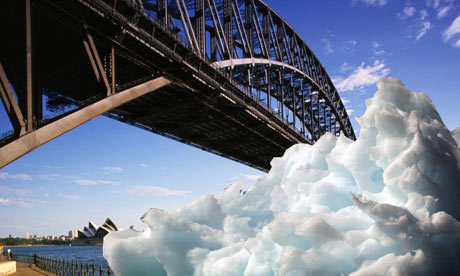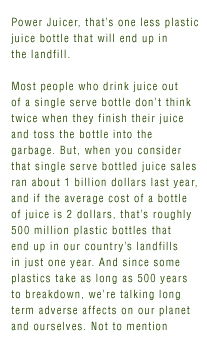As I promised the second part of the Basil Economy…It is everything a holiday should be happy, joyous, warm and wonderful…Enjoy.
http://www.smirkingchimp.com/thread/25675
Anatomy of a community garden: The riveting 2nd installment of building a basil economy
by North of Center | December 23, 2009 – 9:55am [Originally published June 17.]
by Danny Mayer
It’s 11 o’clock in the morning and I’m sitting on a stump in a shady spot of London Ferrell Community Garden, located in downtown Lexington, Kentucky. There’s no other way to say it. I stink. Bad. For the past several weeks I have been trying to meet up for an interview with Ryan Koch, co-founder of Seedleaf, a non-profit created to help establish community gardens throughout Lexington. Although he’d never fess up to it, Ryan is a busy dude.
Thirty minutes earlier, in hopes of catching Ryan on my way home from a morning jog, I had detoured through the fenced-in, rectangular patch of urban community farmland that is London Ferrell. He was there—he’s always there on Saturdays, it seems—and relatively available so I quickly proceeded home, grabbed my recorder for an interview, and made haste back to the half-acre patch of newly productive land, where Ryan was busy negotiating a collection of citizen community gardeners, student volunteers, bitter salad greens, weeds, some donated extra tomato plants, and now one seriously smelly amateur journalist/jogger.
Ryan wasn’t always this busy. A little over a year ago I recall working several Saturday and Thursday mornings alone with him, both at London Ferrell and at a garden Seedleaf helped establish next to Al’s Bar. (Produce from the Al’s garden helped offset food costs at Stella’s Kentucky Deli and Al’s Bar—and to provide its customers with fresh veggies.) Ryan appreciated the morning conversation and at times even the semblance of work I offered.
DOT DASH DOT
“I see gardening as a long, slow conversion for me,” Ryan began between sips of coffee as he grabbed a stump next to me in the shade. “I was 18 and in a college lecture. A professor whose name I couldn’t tell you—and I couldn’t tell you about any of his lectures—read ‘Mad Farmer Liberation Front,’ that Wendell Berry poem. And he read it in the beginning of class and said ‘that doesn’t have anything to do with today’s lecture. I just liked the poem.’” While remaining an intermittent fan of Berry’s work, it wasn’t until 2004 when he married Jodi that the two “committed to trying to do a garden whenever we could as one of our habits of marriage. I thought lettuce was hard to grow. In our first year, I don’t know if we grew any lettuce, but we had a tomato. So we called it goal achieved for year one.”
Before I could get around to asking Ryan how he saw his connection to gardening as an intimate “habit of marriage,” a dog barked behind us in the old Episcopal Burial grounds located at the approximate east flank of London Ferrell. The two neighbors from Campsie who owned the dog began chatting with Ryan; meanwhile, my friend Andrew arrived, the first time I”d seen him since he returned from a two-week sojourn to western Canada and back. Before I noticed it, Ryan had slipped off to help out some other volunteers and neighbors, who asked questions, told stories and awaited directions as to what should be picked,what mulched, what turned under.
Oikos
Although I never recaptured that Right moment to follow up, Ryan’s comments resonated with me. Two weeks earlier I sat in the kitchen of Sherry and Geoff Maddock discussing a range of topics that circled around the ins and outs of what I clumsily call “a basil economy” and they called “food systems.” Through the course of our conversation, I asked Sherry about how she viewed her position as head of the North Martin Luther King Neighborhood Association (NMLKNA). Sherry explained that she viewed the neighborhood association as “as a civic unit for change. The capacity to work out change in our lives,” she continued, “starts in our own households and then with who we live next to.” Her position as NMLKNA head was simply a considered outgrowth of her everyday life.
Understood in this context, London Ferrell—which owes much of its rebirth as a productive space to the creative social energy of Sherry Maddock—seems like a logical next step. The plot sits less than two blocks from the Maddocks’ house. Its redevelopment as a community agricultural space reflects the Maddocks’ commitment to working out change alongside their neighbors.
DOT DASH DOT
“If you want to care for the earth more,” Ryan observes before ditching me, “put a basil plant in a pot and watch how much you care about when it rains. That’s been very real in my life. I really stress out after four dry days in a row. I never used to be that kind of guy. I’m irritable. I pray more. I’ve never prayed so much for rain. It’s changing me; it’s part of how gardening is converting me.”
Imagination and Action
I recall being mildly surprised when Sherry told me that, as a producer of food, London Ferrell does little to effect the larger presence of hunger in the greater Lexington area—our most immediate neighbors. It “doesn’t even make a dent in…the provision of local food,” she says. It’s too small; for it to have a tangible impact, London Ferrell would have to scale up its production, its volunteers, its space. All of these things have consequences of course—more labor, more dialogue about best use of the communal space, more places ready to receive and process the increased amount of food coming in. These things take time, Ferrell is a limited space, and meanwhile people are still hungry. Instead, Sherry talks about the garden’s main function residing “at the level of the imagination…it begins to stimulate people’s minds to possibilities.”
I’m normally skeptical of these assertions because they tend to ride into the more politically passive realm of symbol. As in, that London Ferrell garden is a “symbol” of change in the community. However true that may be, I tend to add more value to even the smallest material changes in people’s lives. Did anyone get fed because of the garden’s existence? If so, for me that outweighs any symbolic meaning that, like money, we can’t use to sustain ourselves for long. It’s a little like Obama’s message of “hope” in that way.
But I must admit, as important as those food routes may be for the nourishment of at least some North side residents, viewing its chief work as working “at the level of the imagination” makes a lot of sense. If taken correctly, London Ferrell is both model and challenge for action; Seedleaf is both an invitation to imagine gardens sprouting in most any place and a working pamphlet guiding us along through spring, summer, and fall plantings. One can already see people answering the call of Seadleaf and Ferrells’ challenge of our imagination. Seedleaf is up from three to ten gardens this year; some of the gardeners tending plots last year took the knowledge learned from watching things develop at London Ferrell and moved on to other lots—some no doubt at home, some in a friend’s yard, some at other community lots.
This year Ryan seems finally able to have a go at Seedleaf fulltime. He’s secured a little city money that will pay him to scale up his compost retrieval from area restaurants who would otherwise dispose of it. The increased amount of decomposing vegetable matter will ultimately overwhelm London Ferrell, so he will soon bring his scraps out to PeaceMeal Gardens, a twenty acre patch of rolling hillside at the back of the Bluegrass Community and Technical College’s (BCTC) Leestown campus that is being converted into a working suburban farm. Jessica Ballard, the farm manager at PeaceMeal, worked with her UK sustainable agriculture class to help Ryan develop good composting practices to more quickly and beneficially turn the scraps into usable compost and soil. Both Ryan and the sustainable ag class had their imaginations sparked by a visit paid by urban farmer and activist Will Allen. Some of Jessica’s salary is provided by the Catholic Action Center, who in conjunction with Rebecca have plowed under an acre of soil to grow things that will feed into their food kitchens for the hungry who show at their Godsnet location. Another portion of Jessica’s salary will be paid for through a market garden that will provide BCTC students a dearly needed dash of fresh produce in what is otherwise an educational food desert.
To paraphrase Sherry, there are a lot of imaginations being stoked here, a lot of new configurations of of power and productivity arising through these new food systems. Importantly, several people have done the hard work of translating the imagination into the realm of possibility and eventually actuality.
We need more of that.
:}
Is it too early to say have a HAPPY NEW YEAR? nawww never is.
:}








 The most vocal organizations around the University of East Anglia
The most vocal organizations around the University of East Anglia 






 Welcome to our free online resource for off-grid living.
Welcome to our free online resource for off-grid living.

 In the summer of 1980, my wife, three-month old son and I moved “off-grid”. We loved living in San Francisco but wanted to live a simpler, more independent lifestyle, and so we bought a small cabin with land on a rural island in the Pacific Northwest. Since there were no services to the island, our home had no electricity. Residents of the island had to create their own electricity or do without.
In the summer of 1980, my wife, three-month old son and I moved “off-grid”. We loved living in San Francisco but wanted to live a simpler, more independent lifestyle, and so we bought a small cabin with land on a rural island in the Pacific Northwest. Since there were no services to the island, our home had no electricity. Residents of the island had to create their own electricity or do without.



